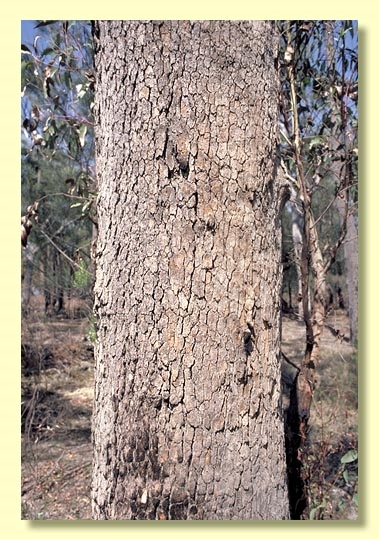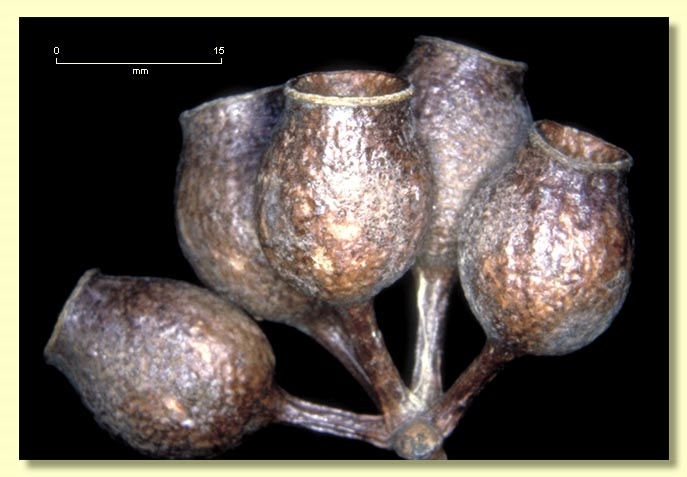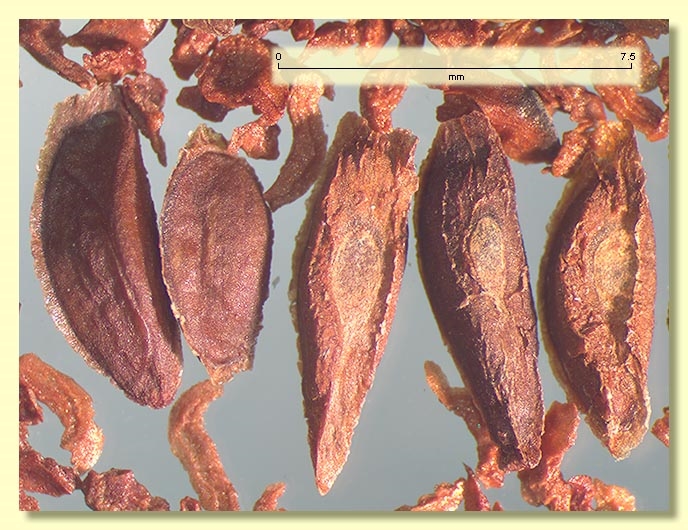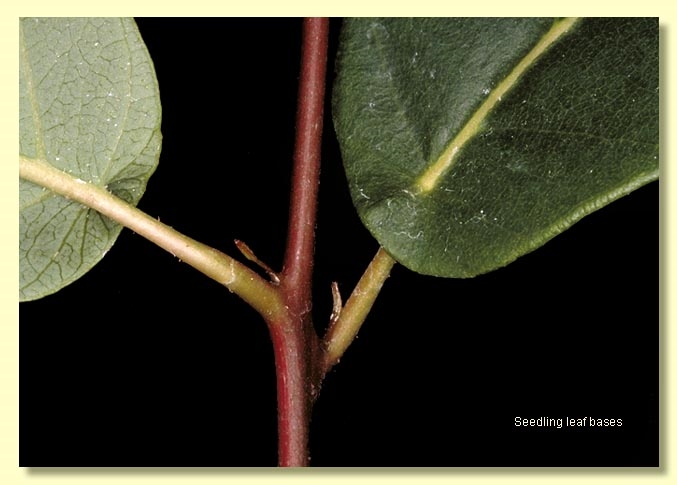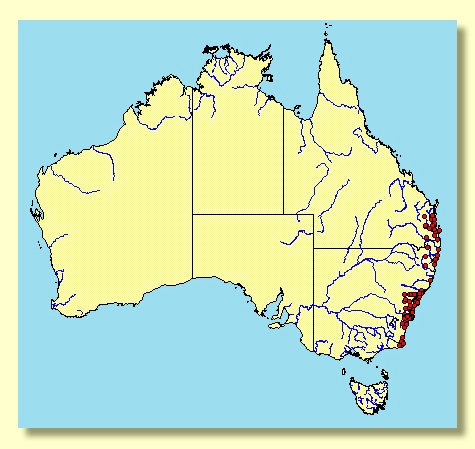Euclid - Online edition
Corymbia gummifera
Corymbia | Rufaria
Corymbia gummifera (Gaertn.) K.D.Hill & L.A.S.Johnson, Telopea 6: 233 (1995).
Metrosideros gummifera Sol. Ex Gaertn., Fruct. 1: 170, t. 34, fig. 1 (1788); Eucalyptus gummifera (Sol. Ex Gaertn.) Hochr., Candollea 2: 464 (1925); T: Botany Bay, NSW, 1770, J.Banks & D.Solander s.n.; holo: BM.
Eucalyptus corymbosa Sm., Spec. Bot. New Holl. 1: 43 (1795). T: Port Jackson, NSW, 1793, J.White s.n.; holo: LINN; iso: BM, CGE, G, K.
Eucalyptus purpurascens var. petiolaris DC., Prodr. 3: 221 (1828). T: a cultivated seedling, Paris, France, collector unknown; holo: G (fide S.T.Blake, Austral. J. Bot. 1: 259, 1984).
Eucalyptus oppositifolia Desf., Tableau de l'Ecole de Botanique du Museum d'Histoire Naturelle: 222 (1804). T: N. Holl., Or. H.; holo: P. [Figured by J.H. Maiden Crit. Rev. Eucalyptus, 4: Plate 162, Figure 6 (1919)], fide K.D.Hill & L.A.S.Johnson, Telopea 6: 235 (1995). See also comment by S.T.Blake, Austral. J. Bot. 1 (1953) 259.
Bark usually rough to small branches, tessellated, predominantly grey or brown, with reddish or pinkish, yellow or orange patches; smooth bark of mallees pale orange, pink, white or grey.
Juvenile stem rounded in cross-section, scabrid; juvenile leaves always petiolate, peltate for the first 8 to 10 nodes, opposite for 4 to 10 nodes then alternate (but may revert for a few nodes), ovate to elliptical to lanceolate, 9–16.5 cm long, 3–5.2 cm wide, base of lamina rounded at first then tapering, discolorous, green; stems and leaves setose for up to ca 10 nodes.
Adult leaves alternate, petiole 0.8–2.3 cm long; blade lanceolate, 5.5–16 cm long, 1.5–5 cm wide, flat or undulate, base tapering to petiole, discolorous, glossy or dull, green, strongly penniveined, densely to very densely reticulate, intramarginal vein parallel to and just within margin, oil glands obscure or island.
Inflorescence terminal compound, peduncles 1.7–3.3 cm long, buds 7 per umbel, pedicels 0.2–1.5 cm long. Mature buds obovoid to pyriform, 0.8–1.2 cm long, 0.4–0.6 cm wide, green or creamy, smooth, scar absent (both opercula shed together at flowering), operculum slightly beaked to conical to rounded, stamens inflexed, anthers cuboid to oblong, versatile, dorsifixed, dehiscing by longitudinal slits (non-confluent), style long, locules 3 or 4, the placentae each with 4 vertical ovule rows. Flowers creamy white.
Fruit pedicellate (pedicels 0.2–1.6 cm long), urceolate, 1.2–2.2 cm long, 0.9–1.8 cm wide, disc descending, valves 3 or 4, deeply enclosed.
Seeds brown or reddish brown, 5–8 mm long, more or less elongated boat-shaped, dorsal surface smooth but more or less keeled, not terminally winged but with narrow marginal flange around part of seed, hilum ventral.
Cultivated seedlings (measured at ca node 10): cotyledons reniform to orbicular; stems rounded in cross-section, scabrid on lower part; leaves always petiolate, opposite for 4 to 7 nodes, elliptical to ovate with base rounded to puckered with petiole peltately inserted on the underside of the lamina, then becoming alternate, ovate to lanceolate, 6–13 cm long, 2–5.3 cm wide, base no longer peltate after ca node 8–10, discolorous, glossy, darker green above. Leaves scabrid on underside until ca node 8.
Flowering has been recorded in January, February, March, April, May, June and December.
A small to tall bloodwood tree, or rarely a mallee on poor sands, in south-eastern Australia, distributed from far eastern Victoria, e.g. Mallacoota, north along the coastal plains and subcoastal ranges to south-eastern Queensland as far as Crows Nest, Mount Walsh, Gympie and Fraser Island. Corymbia gummifera has thick rough tessellated bark to the small branches, adult leaves paler on the underside, a terminal inflorescence with smooth buds usually on long pedicels, urn-shaped fruit and seeds with a partial marginal flange rather than a wing on one end.
C. gummifera can resemble C. intermedia in stature, habit, and leaves, but is basically distinguished by the seeds, which lack a wing unlike most bloodwoods. It also grows on less fertile soils than C. intermedia. The fruit of C. gummifera is strongly urceolate and contrasts with that of C. intermedia, which may be contracted at the rim but not flared. Another bloodwood which may be confused with C. gummifera is C. eximia, a species from the coast and nearby ranges north from Nowra to the Hunter Valley in New South Wales. C. eximia has concolorous leaves, pale yellow-grey bark and buds with an operculum scar, distinguishing it from C. gummifera.
In the north of the species range C. gummifera may be confused with C. clarksoniana, but the latter has scurfy buds and seeds that are winged.
MORE ABOUT CORYMBIA
MORE ABOUT RED BLOODWOODS


